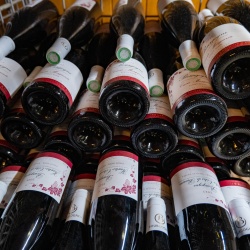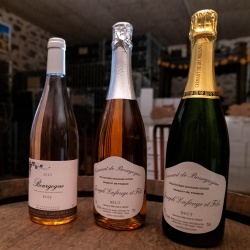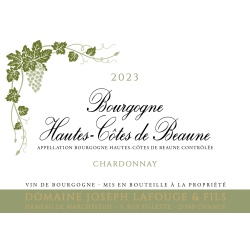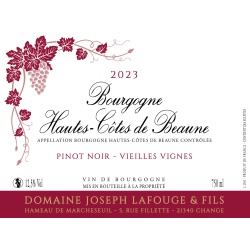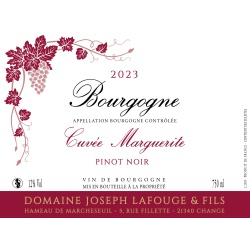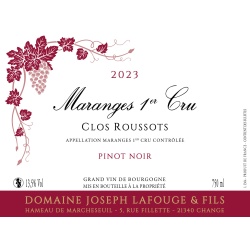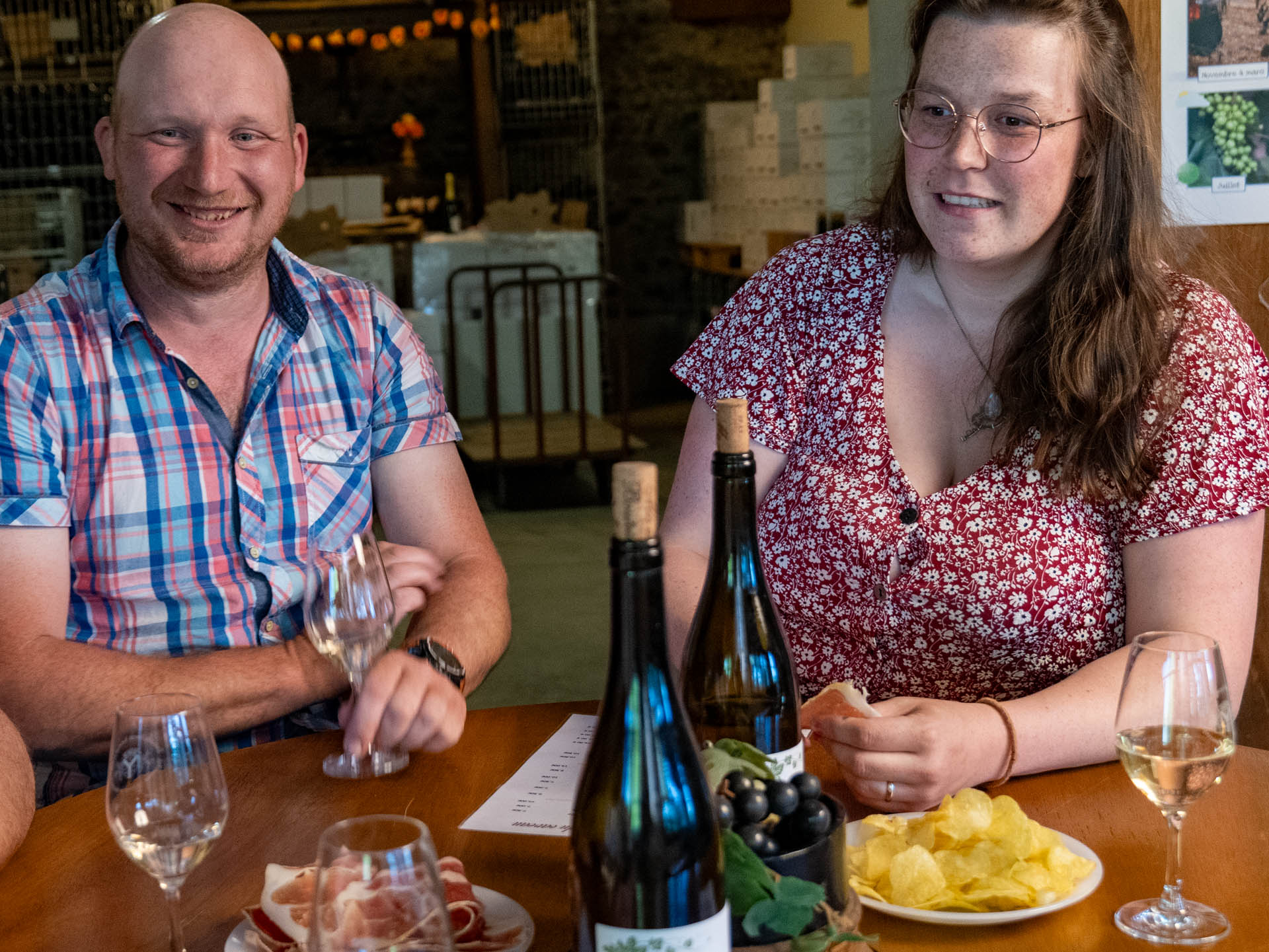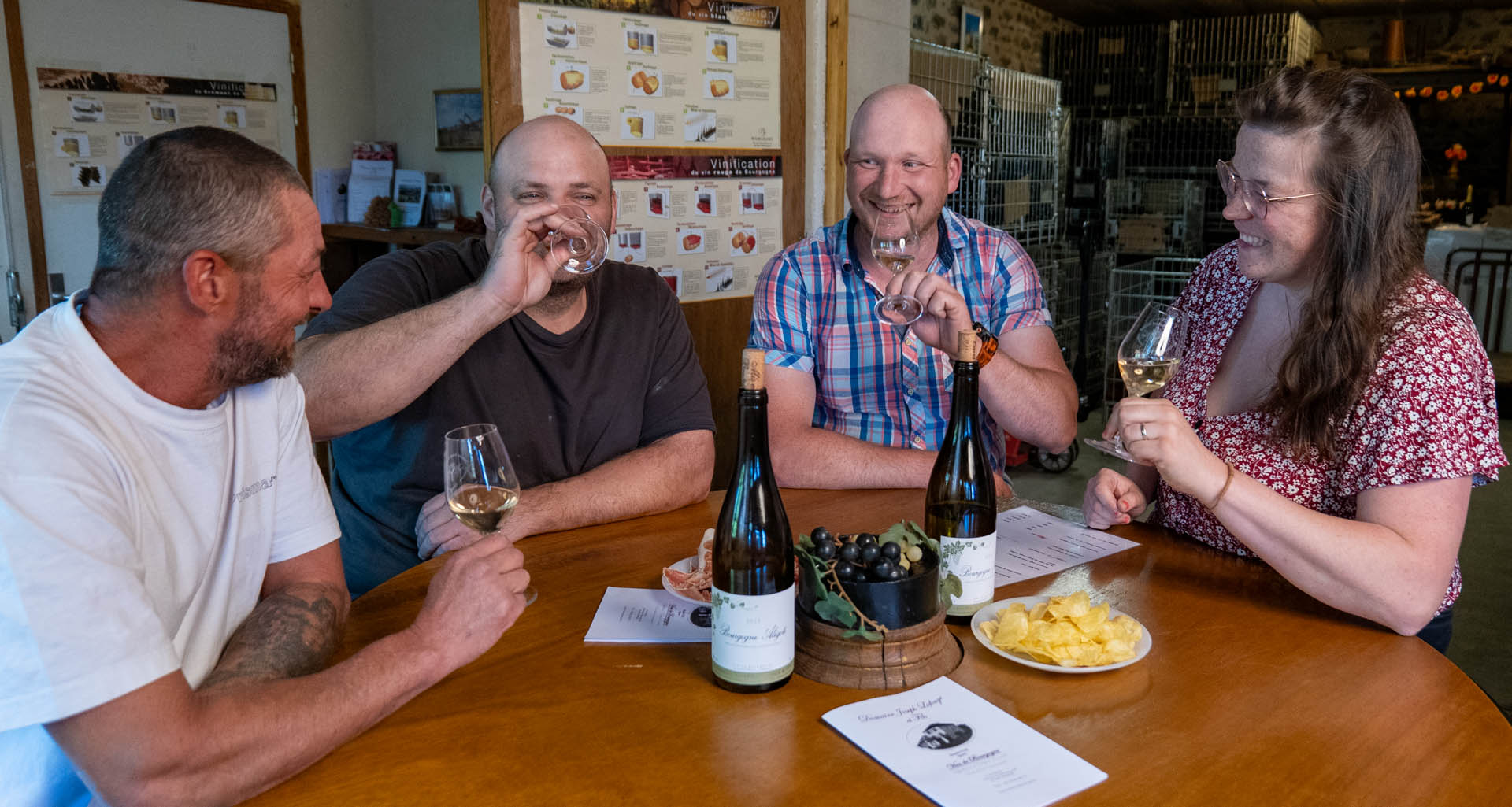white wines
How the white wines are elaborated :
Our Hautes Côtes de Beaune is produced from Chardonnay grapes and our Bourgogne Aligoté from Aligoté grapes. The two grape varieties are treated in similar ways.
After each variety has been harvested, the grapes are pressed as soon as they arrive in the winery, before being placed in vats for around 10 days to complete the alcoholic fermentation.
-For the Hautes Côtes de Beaune, the wine is drawn off and then placed in barrels for around 10 months, at which point malolactic fermentation is complete. The contents of the barrels will then be assembled in vats and the wine will wait a further 1 month before filtration and bottling.
-For the Aligoté, the wine is drawn off and then placed in vats, where it will remain for around 10 to 11 months before being filtered and bottled.
red wines
How our red wines are elaborated :
After the Pinot Noir grapes have been harvested for each of our 3 appellations, the grapes are stored in vats for around 10 days to allow alcoholic fermentation to take place.
Once fermentation is complete, all the grapes are pressed and then drawn off to retain only the fermented juice. For Bourgogne cuvée Marguerite and Maranges 1er Cru Clos Roussots, the wine is then placed in oak barrels for around 10 months. For the Hautes Côtes de Beaune ‘Vieilles Vignes’, the wine is kept in vats for around 10 months.
At the end of this period, malolactic fermentation is complete. The barrels will be assembled in vats for each of the appellations. The 3 wines will remain in vats for 1 month before filtration and bottling.
rosé and crémants
How we elaborate our crémants :
We harvest our pinot noirs when they are fully matured, and then entrust André DELORME with the elaboration and champagnisation of our two varieties of crémants: rosé and blanc de noirs.
These can be enjoyed as an aperitif or at the end of a meal, bringing a festive touch to your table.
How our rosé is elaborated :
Our Burgundy rosé is made from Pinot Noir grapes.
After each variety has been harvested, the grapes are pressed as soon as they arrive in the winery, before being placed in vats for around 10 days to complete the alcoholic fermentation.
The wine will be drawn off and then placed in vats, where it will remain for around 10 to 11 months before being filtered and bottled.
?It is to carry on Joseph's tradition that we produce Bourgogne rosé. Indeed, he began his business with a range of reds and rosé as he did not yet have any white grape vines.
white wines
Bourgogne Aligoté
Made from the grape variety of the same appellation, we cultivate 1.32 hectares, part of which is on clay-limestone land (in the commune of Change and its hamlet of Marcheseuil) and the other on sandstone (in the commune of Paris-l'Hôpital). This dry wine nonetheless offers acidity and fruitiness.
- It will be an ideal partner for :gougères
- shellfish
- tapas
- cold meats
Hautes-Côtes-de-Beaune blanc
We grow our Chardonnay on 67.96 ares of clay-limestone land in Change and the hamlet of Marcheseuil.
Its golden yellow colour and fruity character will go perfectly with :
- pochouse or other fish dishes,
- a white meat dish
- A terrine or pâté,
- dry cheeses
- shellfish.
red wines
Hautes Côtes de Beaune "vieilles vignes
The Hautes Côtes de Beaune is made mainly from vines planted between 1961 and 1991. These Pinot Noir plants are grown on the two hillsides of the commune of Change (hamlet of Marcheseuil and lieu-dit Chassagne) and cover an area of 6.27 hectares. Its bright red/garnet colour is accompanied by a sweet, fruity note.
It goes well with :
- meat in sauce
- Wild meat
- strong cheese (e.g. Epoisses or Cîteaux)
- a terrine
- Couscous
Bourgogne "cuvée Marguerite"
We grow 1.20 hectares of Pinot Noir in the sandy-clay soils of Saint-Sernin-du-Plain.
This berry-flavoured wine is smooth on tasting and goes perfectly with :
- fondue
- blue cheeses
- freshwater fish
- a spicy dish
Maranges 1er Cru "Les Clos Roussots"
Grown in the commune of Cheilly-lès-Maranges, our parcel of 55.57a is located on limestone soils. Made from Pinot Noir grapes, this is the most tannic wine in our selection. In addition to its dark red colour and fruity flavour, our barrel-ageing gives it a marked woodiness.
It is an ideal accompaniment to :
- strong cheese
- game
- grilled red meat
rosé and crémants
Bourgogne rosé
How our rosé is elaborated :
Our Burgundy rosé is made from Pinot Noir grapes. After each variety has been harvested, the grapes are pressed as soon as they arrive in the winery, before being placed in vats for around 10 days to complete the alcoholic fermentation. The wine will be drawn off and then placed in vats, where it will remain for around 10 to 11 months before being filtered and bottled. It is to carry on Joseph's tradition that we produce Bourgogne rosé. Indeed, he began his business with a range of reds and rosé as he did not yet have any white grape vines. The Pinot Noir grapes used are grown in the commune of Saint-Sernin-du-Plain, covering a surface area of 11a.
Drier than the rosés from the south, they go very well with :
- savoury or sweet tarts,
- tapas
- pâtés
- paëlla, couscous
crémant de Bourgogne rosé
How we elaborate our crémants :
We harvest our pinot noirs when they are fully matured, and then entrust André DELORME with the elaboration and champagnisation of our two varieties of crémants: rosé and blanc de noirs.
These can be enjoyed as an aperitif or at the end of a meal, bringing a festive touch to your table.
crémant de Bourgogne blanc
How we elaborate our crémants :
We harvest our pinot noirs when they are fully matured, and then entrust André DELORME with the elaboration and champagnisation of our two varieties of crémants: rosé and blanc de noirs.
These can be enjoyed as an aperitif or at the end of a meal, bringing a festive touch to your table.



